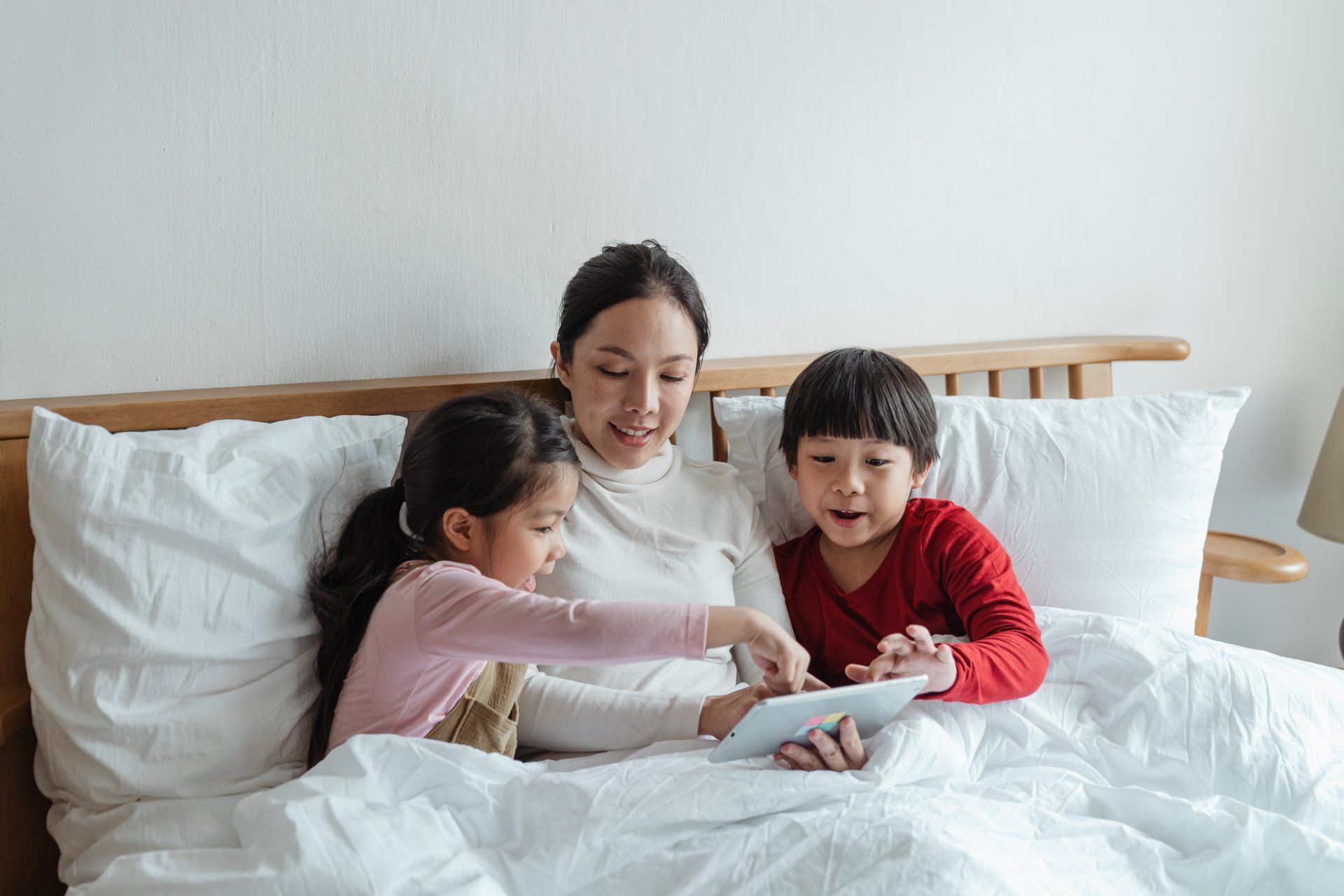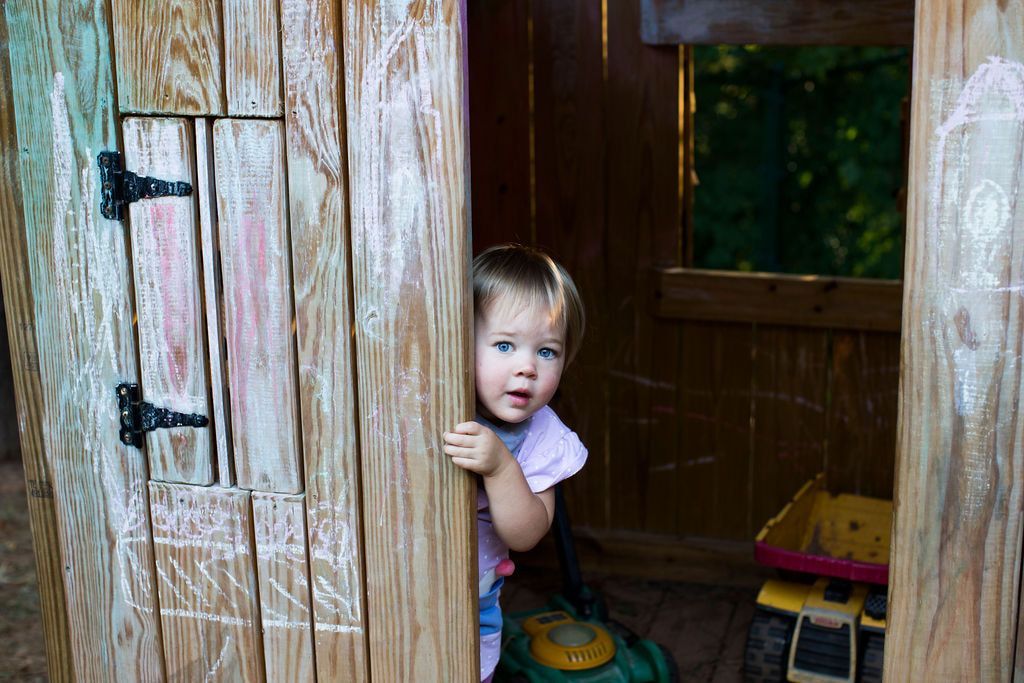
The American Academy of Pediatrics recommends avoiding screen media exposure (except for video chat, which is appropriate for children of all ages) before age 18 months and setting screen time limits of one hour per day or less for older toddlers and preschoolers. However, recent research shows that young children are spending an average of 2.5 hours DAILY on screens. If you find this number alarming, you’re not alone!
Digital technologies such as televisions, tablets, and smartphones have become central to modern society. Screens can be a valuable tool for parents to use with and for their children. However, face-to-face human interaction will always be the primary and preferred way for young children to learn. A child ages 0-6 is in the absorbent mind stage of development, soaking in everything in the environment easily and completely. This means the good and the bad are taken in equally. It also means the child cannot absorb what is not there, so as adults it's our responsibility to provide an environment rich in concrete experiences, language(s), art, culture, discovery, exploration, and most importantly, emotional connection and a sense of love and security.
Technology is useful, but not essential, for young children. Whether or not your family chooses to engage with technology in the home is a personal decision. Evaluating your unique family situation and values is important to determine whether and how technology fits in. There is a distinct difference between intentional, mindful media use that contributes to a child’s knowledge and development and habitual media use without a clear benefit to the child. It’s necessary to carefully consider the impact of our technological choices on growing young minds. In the same way that Montessori materials are introduced to children with a set of lessons, safety precautions, and guidelines, home media use for young children requires a knowledgeable guide. Parents play an essential role in shaping children’s media literacy and guiding them to learn healthy boundaries around using technology as a tool.
While technology is rarely included in the Montessori classroom, applying Montessori principles to screen time provides a framework for home media use with young children. Here are a few of our favorite Montessori-based approaches to setting healthy boundaries around technology and choosing media that contributes to children's well-being.
Freedom Within Limits
- Set firm boundaries around technology, including what type of devices children can use, how long they can spend on the device, and what type of content they can access. Hold these boundaries in a firm, loving way, and do not change your limits in response to tantrums.
- Create technology-free times and spaces in your home. Choosing areas such as bedrooms and eating areas to be tech-free encourages healthy boundaries around technology. Prioritizing tech-free meals where the family sits down together to eat and engage in conversation is invaluable for healthy child development.
- Fit screen time into the gaps of your child’s day rather than making it a central focus. Ensure that your child’s schedule prioritizes the things that matter most for child development, including interaction, play, sleep, meal time, exercise, and reading.
Follow the Child
- Think about the Three Cs when it comes to tech use in childhood:
- Child- Your child is the “who” of the media situation. What are your child’s individual characteristics? Each child experiences media differently depending on their age, developmental level, cognitive skills, past media experiences, preferences, and interests. Choose media that is aligned with your child’s level and interests.
- Content- The content your child is watching is the “what” of their media experience. It is essential to pay close attention to the themes, behaviors, messaging, and design of the media your child is interacting with. Opt for shows with a slower pace of motion, relatable situations, and kind language. Children copy what they see, so it’s important to ensure that the content modeled on the screen is positive and appropriate.
- Context- Think of context as the “where, when, how” of the media situation. What type of device is your child using? Where are they? What time of day is it? Who else is present with your child? As often as possible, engage with your child around their tech use. Screen time is not a babysitter, but it can be used as a tool for education and connection. Try joining your child for their media use and talking about what you see on the screen to help your child connect the screen to real life.
Practical Life
- Seek out age-appropriate and relevant educational media content that contributes to your child’s growth and development. Look for themes and lessons that they find interesting to help support and advance their learning.
Behavior Modeling
- Integrating technology into children’s lives should always be secondary to face-to-face human interactions. Research suggests that parent phone use around children can cause impactful interruptions in parent-child relationships. This happens through a concept coined technoference, when technology causes interference in interpersonal interactions. Consider how often you pick up and look at your phone throughout the day, and be mindful of the ways your children see you interacting with technology.
- Set screen time limits on all devices. People use screens far more often than they think they do. Set realistic screen time limits on your devices to reduce daily usage.
Montessori education is a preparation for life. As caregivers, it's important to consider what kind of life we hope to create for our children. Media use is not essential to childhood, but if you do choose to use media at home we hope that these tips serve as a helpful guide for making the most of your child's screen time experiences.
References:
Guernsey, L. (2007). Into the minds of babes: How screen time affects children from birth to age five. Basic
Books.
McDaniel, B. T., & Radesky, J. S. (2018). Technoference: Parent distraction with technology and associations
with child behavior problems. Child development, 89(1), 100-109.
Ohme, J., Araujo, T., de Vreese, C. H., & Piotrowski, J. T. (2021). Mobile data donations: Assessing self-report
accuracy and sample biases with the iOS Screen Time function. Mobile Media & Communication, 9(2), 293-313.
Rideout, V., & Robb, M. B. (2020). The Common Sense census: Media use by kids age zero to eight. San
Francisco, CA: Common Sense Media.


